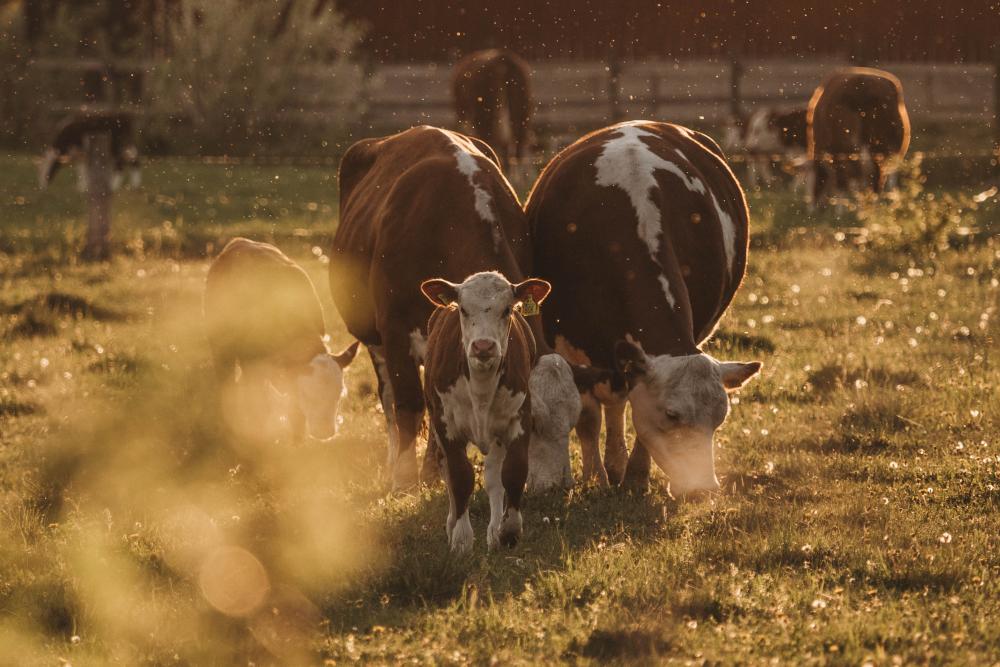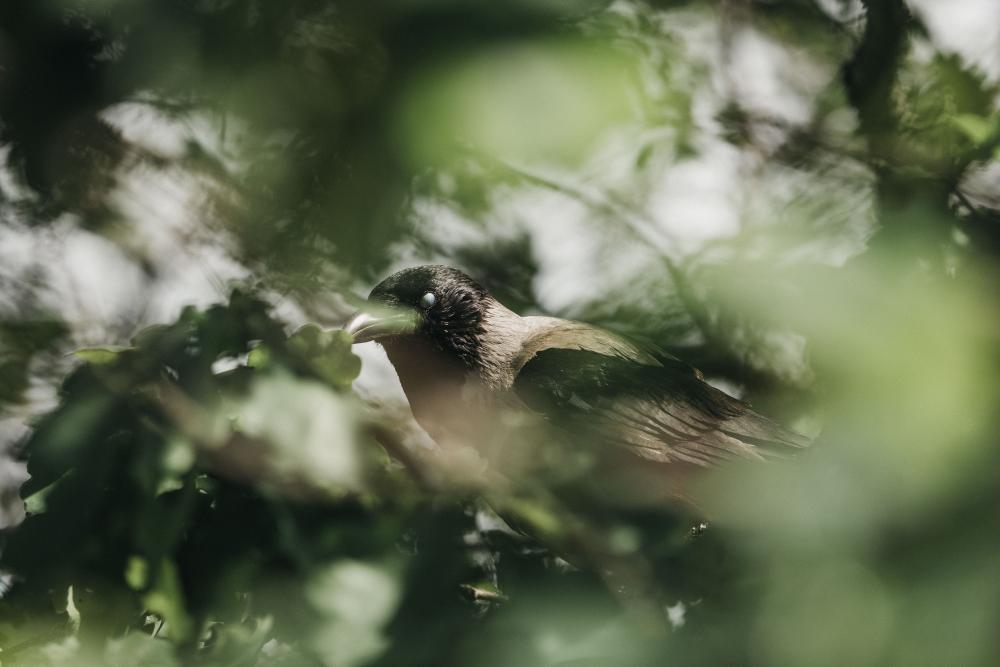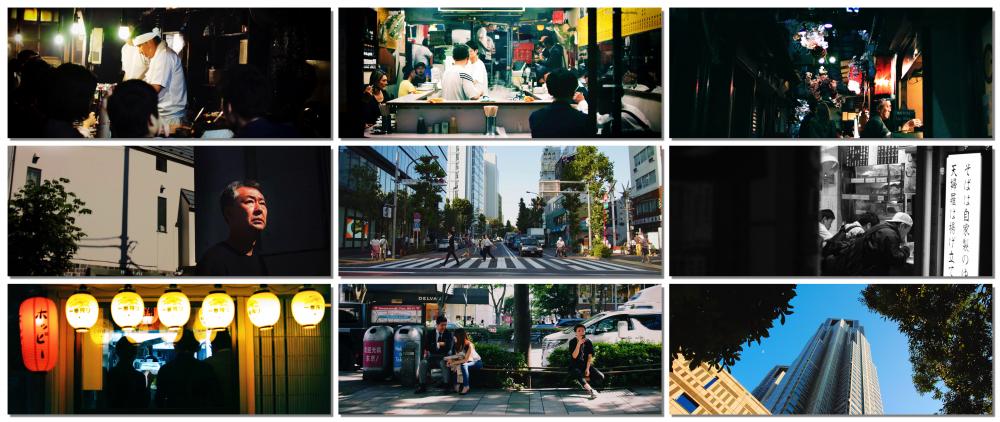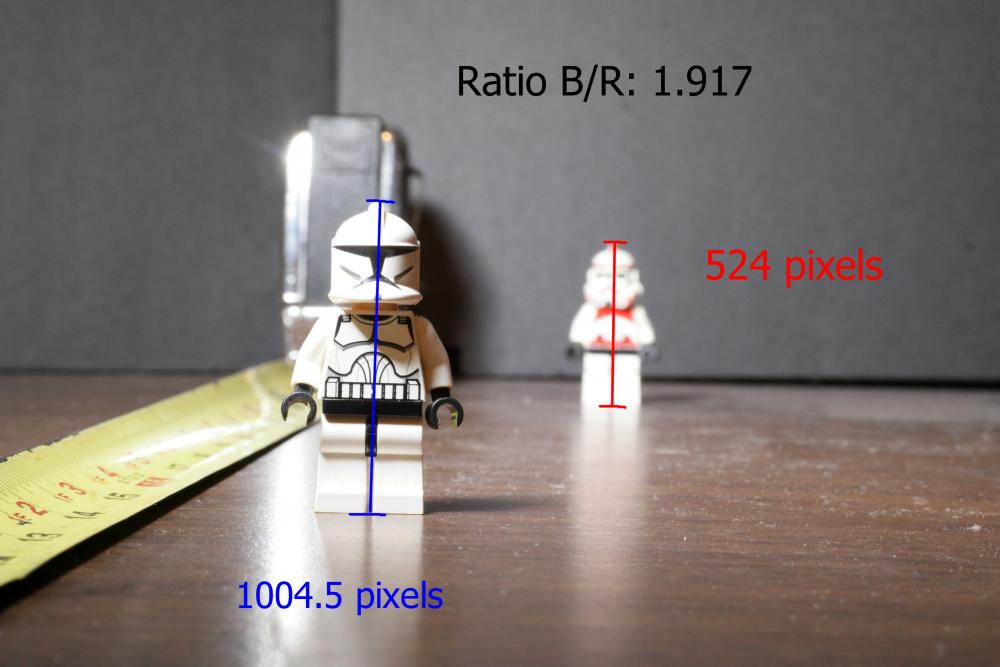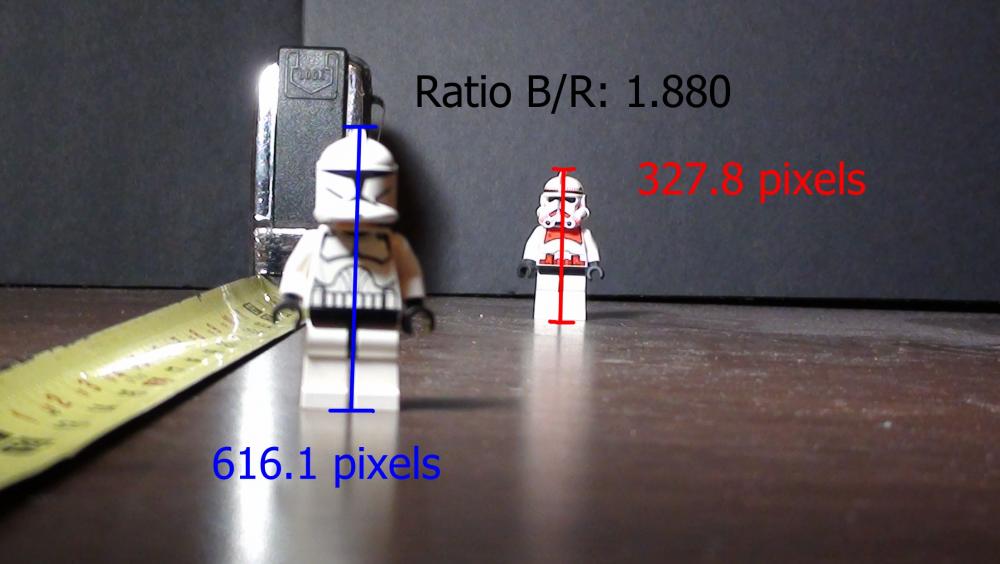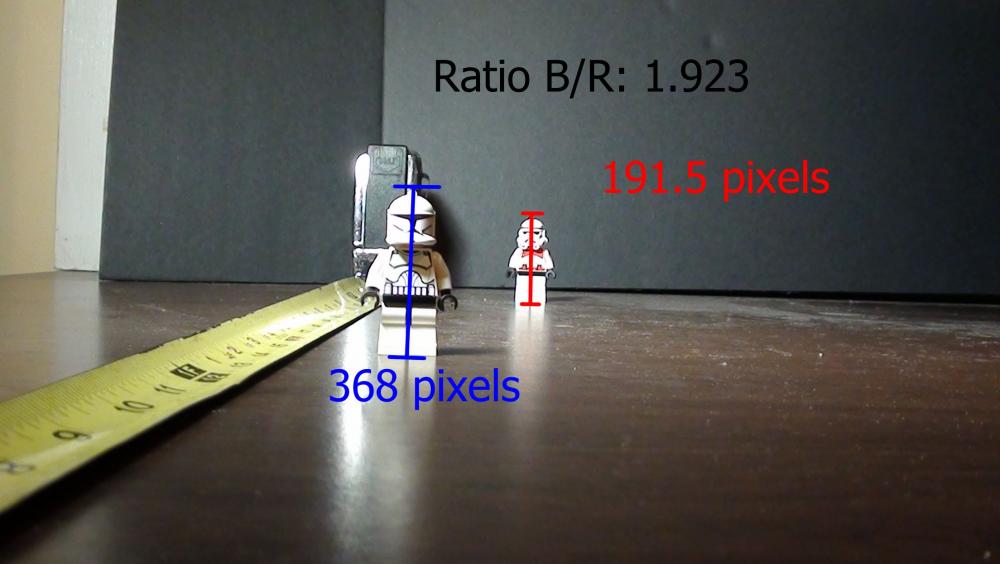Leaderboard
Popular Content
Showing content with the highest reputation on 05/22/2018 in all areas
-

Golden rules on blocking the actors!
Jonesy Jones and 2 others reacted to AaronChicago for a topic
If you have $99 to spare I highly suggest watching Ron Howard's Masterclass. He has a few dedicated sections on blocking. It's invaluable if you ask me.3 points -

Vloggers aren't crazy (speed and control of film-making)
Nathan Gabriel and 2 others reacted to IronFilm for a topic
$50K?! That is nothing. I've been on shoots where just a single lens costs that. And yeah, some folks coming from that world might do shoots they call "Situation D / C" yet from your perspective it very much "Situation A". So even simply classifying different types of shoots isn't always straight forward. And even within "Situation A" there is a tonne of variety, from shoots which might want to get a couple of dozen pages of dialogue done in a single day, vs others which are only aiming to complete a couple of pages worth per day.3 points -
Fast apertures on the GH5 = Full frame
Jimbo and 2 others reacted to Cliff Totten for a topic
Admittedly,...this is going to sound really stupid. However, I think the word "Micro" was a bad choice for the title of this system. People are OK with a 4:3 aspect ratio but nobody wants a "Micro" sensor. All it does is remind people every time it is said that it's a "small" sensor. Imagine if it was named the "Super 4/3" system"? "Super" 4/3 would have diverted attention away from its size and "psychologically" is a much better marketing name. Yeah....I know this sounds stupid but sadly, I still think this idea holds true. Super 4/3....much better "ring" to that name.3 points -

Shot a music video with the Letus Anamorphix
kye and one other reacted to covertfilm for a topic
Hey everyone, A music video I directed just released this week and I thought I'd share it! We shot in an old salon & a retro pinball collection and we used a bunch of aputure lights and rented a 'Letus Anamorphix' adapter which was quirky, but gave the look that I wanted in the end. We shot on an A7s (mark 1) into a blackmagic 4k recorder/monitor. I guess the main oddity of the adapter is that the aspect ration wasn't truly a 1.33x squeeze. It seemed to vary depending on where I had the 'focus ring'. So i ended up adjusting the clips scale by hand in the final grade. The actors were the lead singer and his girlfriend (who is a non-actor), but I'm really proud of how they just went for it. YOUTHFOOL - Late Nights: https://youtu.be/PFc0JFBGJ8U Any thoughts on the look of the adapter? Has anyone else used it before? - Luke2 points -

Good vintage taking lens ideas between 58mm-85mm
Teemu and one other reacted to Ian Edward Weir for a topic
If you like zooms with anamorphic's you might like this Sorry, posted in wrong place.2 points -
35-70 is still a 2x zoom. Same as the Sigma 50-100mm, and greater than (by a teeny amount!) the Sigma 18-35mm or Tokina 11-20mm f2.8 Hahaha. Maybe they really are? :-o2 points
-
Nice catch but isn't this more an issue with Mac OS/Quicktime rather than the A7III? i can confirm similar inconsistencies comparing QT & VLC using Fuji/Canon footage.2 points
-

Fuji does it again
Xavier Plagaro Mussard and one other reacted to kaylee for a topic
im gonna make a camera that films in 16k at 3fps but the 3fps part is a secret, you have to buy the camera to find out about it and before you buy you have to sign a nondisclosure agreement2 points -

Vloggers aren't crazy (speed and control of film-making)
Nathan Gabriel reacted to kye for a topic
Vloggers aren't crazy.... but there sure is lots of debate around the topic! My theory is that they are making films in a different situation and the fact they have different needs is why they appear to be crazy to film-makers from other situations. This is my attempt to explain it. I think film-makers fall across a spectrum of the speed of film-making and the amount of control over the environment that exists. Situation A: low-speed / high control. In situations where things happen very slowly (eg, on a controlled set, or perhaps shooting landscapes and B-roll) you can have everything on full-manual and get the best results because you're in full control of what is happening. This means time to level a tripod, setup whatever lights you want, use a light-meter, adjust all camera settings, setup and rehearse camera moves, etc etc. In this setting having the camera do things for you is counter-productive because you want to have full control over everything. Therefore things like autofocus and IBIS are unwelcome, camera weight and size might not matter, but image quality probably matters a lot, and cinema-primes are a good fit. I think the GH5s / BMPCC4K are aimed more at this type of application. There is always room for a sound-person and various crew here. Situation B: moderate-speed / moderate control. In situations where things happen faster but you have a good degree of control there is value in having some 'helpful features'. This might be something like run-and-gun film-making where you have time to setup an interview station where you have a moderate amount of control. Things like manual focus can still be used, but reliable face-detection would be useful. You might set shutter speed and aperture but have auto-ISO enabled. Camera size and weight potentially matter because you might be filming B-Roll or featuring clips of things that aren't in your control (eg, shooting an event) so having a lighter tripod setup you can carry around and shoot with quickly is useful. Having a sound-person and other crew also works here. Situation C: high-speed / some control. In situations where things are happening in real-time but you have a degree of control over some aspects the priorities shift again. This might be something like ENG film-making where when the action happens you have to capture it with no second chances, but you might also be interviewing people and have some degree of control about how the interviews are done. For example if you were covering a building fire you have no control over when or how the fire will burn, what the responders will do about it, etc, so you need to be able to move very quickly, having a rig that can be hand-held (shoulder rig normally) and also having a tripod that is quite portable. In this situation IBIS, reliable auto-focus, an all-in-one zoom lens, etc become desirable features. However, during the interview situation you can still have input into what is asked, where it is (interviewing the fire chief with something burning in the background makes a nice shot) but if people fumble their replies you can often ask them to repeat something or prompt them in a variety of ways. These can have crew, but often due to the economics of the situation there isn't budget. Situation D: high-speed / no control. I add this mostly for myself and my home videos, where my priority is to capture what happens without directing anything, as I prioritise the experience over the film. This is 'fly-on-the-wall' film-making in a sense. Technically this is within the previous situation, but I choose not to exert most / all of the control I have. I teased that this discussion was about vloggers, so I think they sit across situations A-C, but the controversy comes in when vloggers are in situation C. There is a hierarchy of needs for vloggers in situation C: They REQUIRE that the camera be small and not attracting the wrong attention because situation C is about shooting in public (I've posted elsewhere about being stopped by authorities when shooting in public) and they require that the camera be able to be turned on and recording at a moments notice and they are almost exclusively a self-shooter with no allowance for any dedicated 'crew'. This is basically iPhone / RX100 territory, and creates films where the content better be great because the picture will be shaky and the audio will be noisy and full of ambient sounds. They often WANT to improve the basic quality and so they add a directional microphone of some kind (typically Rode VideoMicro or Rode VMP+) and try to make it more stable by adding a handle (typically a gorillapod). However (and this is where we get the controversy between vloggers and other film-makers in situations A and B) they LUST after having more 'cinematic' videos, which drives them towards higher-bitrate codecs and large aperture lenses (which means they're now looking at the same cameras - 5DIII, 1DXmII, A7SII, BMPCC4K, XH-1, etc), and they want 'buttery smooth footage' which means world-class stabilisation. Film-makers in situations A and B get these by having setups that are have at least one of the following challenges: slow to setup, cumbersome to use, large and attract attention. When a vlogger looks at a high-end DSLR and sees that it doesn't meet one of the basic things they require (small, inconspicuous, no-setup time) they see it as a fundamental flaw in the camera. This perspective makes no sense to a film-maker who places these features of a camera quite far down their priority list, and this is where the controversy occurs. Of course, vloggers often don't know a single thing about how the pros do things, are often self-centred and unwilling to learn about other styles of film-making, which enrages the pros and thus flame wars ensue. (Of course, exactly the same can be said of a minority of film-makers who are uninterested in how vloggers do things, are self-centred and self-important because they view their film-making as somehow better than other types, and are equally as responsible for the flame wars as the vloggers...). Hopefully this helps to explain some of the key differences and why we keep tripping up on these topics. I know that this is a huge simplification of the variety of situations, that this is a spectrum and film-making can exist anywhere between the four situations I listed above, and that many film-makers have projects that are on different parts of the spectrum and require equipment that is flexible. However, each film-maker and each purchase decision will be made by prioritising the features in one category against the others. BTW, the entire DSLR revolution (ie, the vast majority of people on this board) probably look like vloggers in the eyes of those shooting on big-budget sets with the $50-100K setups and equipment that requires a truck to lug it around. Anyone criticising the BMPCC4K is going to look like a spoiled millennial when we criticise a $1300 camera that shoots 4K RAW!1 point -

Canon M50 mirrorless camera features 4K video
Dave Maze reacted to Don Kotlos for a topic
There are some machine vision C-mount lenses that do resolve 4K but they are fairly expensive and certainly not worth buying for the M50. That being said, even if a lens does not resolve the 4K resolution, it can still create a very nice filmic image since you won't notice any aliasing artifacts and there is going to be a gradual decrease in amplitude of the higher spatial frequencies.1 point -
Fast apertures on the GH5 = Full frame
Gordon Zernich reacted to Timotheus for a topic
Cheers Don. Understanding equivalence was a super useful, practical insight for me. So if a thread keeps a constructive and inquisitive tone, I am glad to see people explaining and listening to each other1 point -

Fast apertures on the GH5 = Full frame
EthanAlexander reacted to Don Kotlos for a topic
I don't find it that great. First of all because especially cinematographers need to know and adjust the DoF, FoV and perspective. That means then need to know the equivalent focal length for all different cameras with different sensor sizes. If you had a m4/3 camera with the 25mm @f/1.4 and you wanted to match the image with a FF camera then you would have to use a 50mm @f/2.8. You then use ISO/NDs/Lights to control exposure. Second is because he was ad nauseam saying you cannot get the same look from different sensor sizes no matter what, even when people provided him with proof. He then he made a youtube video twisting the argument and saying exposure is everything. Lets not go back to that bitterness. Hopefully this is the last thread about it but lets say it one more time: Perspective only depends on the distance from the lens. You can then adjust the focal length/aperture for a given sensor size to get a specific FoV and DoF.1 point -

Good vintage taking lens ideas between 58mm-85mm
Ian Edward Weir reacted to Teemu for a topic
Thanks. I totally agree that usually zooms are out of question. But this setup totally works in it’s own way. I would like to find a lens that gives me possibility to do those crazy ”italo zooms” or ”western zooms” or what ever you like to call it. But only one I know for this suff is Lomo Foton zoom with anamorphic front. But that comes with a big PRICE tag (as all quality anamorphic zooms). Also one lens that I like to use as taking lens in wider end is this great Russian 50mm macro lens. Volna-9. Even without anamorphic must be one of my favorite lenses. Crazy flares, star bokeh at f5.6 - f8 and great macro. Not so much talk about lens also in my opinnion.1 point -
I have used a lot of standard lenses too. I'm not bashing standard lenses. I'm sure the Sony standards are nice. What I am saying is that people forget that the 135 format lenses of the same class as for example the Olympus Pro are often more expensive. The Nikon 58mm 1.4 or Zeiss Otus comes to mind. These are no compromise lenses, much like the mentioned Olympus lens. (no holds barred, heavy, large and costly). To get this kind of no compromise lens is typically cheaper the smaller the format. As it should be. See my previous reply. The Nikon 58mm 1.4G is 1600$. The top quality Sony primes are around 1500$. The top end lenses for smaller sensors are typically less costly. Nothing weird with this. I worked with 120 for many years and those lenses are more expensive. Then we have large format lenses and so on. Step up in film size and costs, weight, et c increases. There is more to cameras and lenses than "equivalence". I may be old school but to me how a system feels to work with is the most important.1 point
-

Fast apertures on the GH5 = Full frame
Castorp reacted to Don Kotlos for a topic
I don't disagree with the fact that smaller sensors require far better glass in order to get similar performance to larger sensors. But the differences that are visible in that test are mostly due to perspective and not distortion, which is really a problem when shooting architecture (both stills & video). In any case, I believe the m4/3 still has its place. Small cameras such as the E-M5ii or the PenF coupled with tiny lenses such as the 17/1.8 and 45/1.8 are a joy to carry around your neck and shoot all day long. Something that even the A7rIII & the 35/2.8 cannot really achieve. If on the other hand you are after image quality or shallow DoF, then instead of start buying expensive & large glass for m4/3, my opinion is that a FF camera will offer a much better solution for the same price/size/weight. Thats why I wish Olympus & Panasonic really put an effort to keep their systems small enough but pleasurable to shoot with. For example I would really love a PenF or a GX9 with a state of the art HUGE EVF that I would want to use instead of using subpar components like the GX9 did in order to save costs ( I would also remove at least half the buttons from these cameras ).1 point -
What camera are you using it with?1 point
-
Yeah that Sigma looks excellent. With Raw video on my 5D, I’m used to needing light, so no biggie, I’m fact I think it has helped me improve. And btw, I meant +1.7 not 2.7.1 point
-
I went back to the scene of the crime and relieved them of the 35-70mm as for £170 its just nuts. Its a constant 3.4 so a tiny bit slow for your requirement but I'll have it on the speedbooster so no biggie for me. I'll have a run out of it tomorrow and post some stuff up in the lens section if I get a chance. Its a bit of a funny range I suppose for many in that they'd prefer it to be 24-70mm or 35-85mm but I wouldn't let that put you off trying it. Like its other Sigma brothers, its a bit of a quirky bugger, it likes light and hates AF but if you work within its limits it makes a fine image. It has 21:9 mode which I've been messing about with here today. Thanks for the tip. I'll try that tomorrow with the stolen Contax Zeiss lenses The porting is going very well. Its a bit limited at the moment with regard to replicating everything the Panasonic lets you do (though in some respects its more comprehensive) but all of the core stuff works fine. I just need some time to probe about and try and see if there is anything that can be done with focusing and to optimise the speed.1 point
-
Fast apertures on the GH5 = Full frame
EthanAlexander reacted to Inazuma for a topic
Did you actually look at Andrew's article? he takes one picture with an m43 camera and 17mm and another with a full frame camera and 35mm. The perspective is shown to be the same. If this wasn't true then most everything you see on daytime TV would be extremely distorted as a lot of is filmed with small focal lengths due to small video sensors.1 point -
Good vintage taking lens ideas between 58mm-85mm
DirectorCH reacted to anton.zimin@gmail.com for a topic
Here you can find a lot: http://lens-club.ru/lenses/c_1427282.html It is all in Russian, but google translate can be helpful. It is a huge data-base of all lenses you could imagine.1 point -
@Pedro Please do the test. This is not about opinions. The pictures you share illustrate the behaviour of different focal lengths on a given sensor size. The whole point is the effect of different sensor sizes trying to frame exactly the same scene from the same distance. You can shoot the exact same picture on those different sensor-sized camera's by using equivalent lenses (see my previous post for example). This also goes for your GH2 and a6500. Tell us what lenses you own and we can help you try it out.1 point
-
I guess once you actually own the cameras of different sensor you will know, right now you just keyboard analyzing1 point
-
What a sellout! Will be interested to see your experience with c-mount lens.1 point
-

Good vintage taking lens ideas between 58mm-85mm
DirectorCH reacted to Hans Punk for a topic
Lomo OKC1-75-1 75mm F21 point -

Vloggers aren't crazy (speed and control of film-making)
Nathan Gabriel reacted to kye for a topic
Absolutely I mention $50K because I thought that was expensive enough to distance it from what we're talking about (mainly GH5 / GH5s / BMPCC4K / A7 series) which aren't anywhere near $50K. Also, a production that large is outside my experience I watched the ARRI Academy HDR Masterclass series and just about had to poke myself with pins to stay awake, the pace of the guy running it was so slow that I would consider him a fire risk - ie, if the place caught on fire I'm not sure he would be capable of leaving the premises fast enough to make it to safety! During a real shoot he might move faster, but it's hard to drive a Ferrari at walking pace so... I'm aware that one metric is 2 minutes of final footage a day for a feature film and that's not a case of going fast by rushing, it's a case of going fast by being thorough and doing things right the first time, so that pace is understandable and I'm not criticising it at all. However, if you compare a big film set like that where a squillion people worked a 12+ hour day to capture 2 minutes of final footage with a production like event or documentary shooting where a single operator captures 2-10+ minutes of final footage in a day the ratio of speed is huge.... (maybe 50-100 times?) .....Let alone a vlogger like Casey Neistat who captured, edited and published videos 5-15 minutes long every day without a break (with no gaps for planning) for months at a stretch then the ratios may as well be in parallel universes because you have to include all of pre and post-production person-hours. In terms of people thinking their situation in C or D but it's really situation A, yeah, that's inevitable. Film-making is an industry so big that people can be involved in part of it but be completely unaware that other parts of it even exist. One of the challenges I have with home video stuff is that because it's mostly kept private there's very little visibility of it. Just like how many people use fancy DSLRs to take pics of their kids - it's hard to understand how many are doing it because people don't publish photos of their kids much - it's an iceberg where only a little of it is visible from the surface. I should also add that in a sense the people operating in a faster environment need to demand more from their equipment rather than less, high DR is useful when you're not in controlled lighting, higher resolutions / bit-rates are useful when you want to punch-in digitally in post instead of changing lenses and doing another take, etc etc.1 point -

Blackmagic Pocket Cinema Camera 4K
Nathan Gabriel reacted to kye for a topic
Your post inspired me to start a new topic about how I see the differences in priorities that film-makers have Here's an example with a battery... It's from this campaign: https://www.indiegogo.com/projects/gimbal-with-focus-control-skyvideo-pro#/1 point -
Andrew, I think this has more to do with the P3 display on your iMac than the OS or camera. I've got one and it's been very frustrating because of the inconsistency: Sometimes even inside of FCPX itself, the footage will be displayed differently whether on a timeline or in the browser, even when the project and library are set the same. Your first example is definitely an instance where the video is not being properly remapped to the display gamut, but it could be because of the mismatch with rec709 which doesn't traditionally go with HLG. So I think what it's doing is treating it like 10 bit footage on a rec709 display with no remapping. (Just like an RGB JPEG displayed on an sRGB display looks washed out.) The second example I think is actually an instance where VLC is the one getting it wrong and preview is getting it right, since 10 bit footage should look really good on a P3 display. I don't think it's converting it to rec709 without telling you: I'm not sure though - that's just my take. I find the whole thing frustrating though, I'll tell you that. We've got this incredible 5K display that's capable of displaying insane color and contrast and we're left dealing with unreasonable inconsistency and headache!1 point
-

Fast apertures on the GH5 = Full frame
Don Kotlos reacted to noone for a topic
That depends. The lenses have to be considered with the camera used. In any case, I think I much prefer the (cheaper) Sony Zeiss 55 1.8 to the Olympus 25 1.2. (yes it is not 50 but it is close enough). I have had a LOT of normal lenses including a Canon FD 50 1.2 I loved and Pentax 50 1.2 that I loved to death (it eventually fell apart on me) but the Sony Zeiss has cured me of all of those others. I also think the FE 85 1.8 is the biggest bargain going in photography for any brand and used on a FF camera I would also prefer it to the Fuji 56 1.2 and the FE 85 is also cheaper than the Fuji. The FE 85 IS an absolute bargain but it is also an excellent lens and has similarly cured me of all the other 85s I have had (still have an FD 85 1.2 L). Just my opinion. EDIT and a couple of other reasons they are even bigger bargains. Both those lenses (55 1.8 and 85 1.8) can be used as 2x virtually lossless zooms in video (as any other lens can and also for Jpeg stills) and also be used both FF and APSC on the FF Sony E mount cameras.1 point -
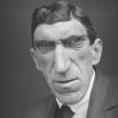
Good vintage taking lens ideas between 58mm-85mm
DirectorCH reacted to buggz for a topic
I LOVE my declicked Minolta Rokkor PG 58/1.2 EOS mount - Metabones 0.64XL Speedbooster - Bell & Howell Kowa 2X combo! I use the great Rapido anamorphic lens clamp V2. I have also used a Porst 55/1.2 in Pentax K mount. I would love to try a Leica R Summilux 80/1.4 Always wanted one...1 point -
What's even more stupid on Apple's part is that by default FCPX now adjusts the gamma curve of Hybrid LOG Gamma footage so that effectively it is automatically grading your image. You have to go into the settings and set "Show HDR As Raw Values"! It is not working as it should be because the colours are fucked. Premiere is fully representative of the original material as I shot it. Quicktime and FCPX change the gamma curve and colour to convert the Hybrid LOG Gamma material to the final graded HDR image... Which isn't much good if you are using Hybrid LOG Gamma as a flat image profile to manually grade or apply your own LUT.1 point
-
Fuji does it again
Aussie Ash reacted to no_connection for a topic
The problem here is 15p is the ONLY option. So customers seeing 4k in there buys it and then have fun when they discover they can't even film in 24p.1 point -
Good vintage taking lens ideas between 58mm-85mm
DirectorCH reacted to anton.zimin@gmail.com for a topic
Biometar is a very good lens. I use an MC version with ISCO. It has a nice bokeh and very sharp for its price. But it’s not easy to find one in a good condition. And I don’t recommend the zebra version. Also I had to change the grease on my lens.1 point -
Fast apertures on the GH5 = Full frame
EthanAlexander reacted to Timotheus for a topic
It can be the same. Put your m4/3 camera with a 25mm f1.4 next to a FF cam with a 50mm at F2.8. The framing and DOF will be identical. See the many examples above for more info. As a side note: I would like to cheer everyone participating in this nerdy thread on equivalence for not getting into petty arguments (i.e. the way this subject normally ends up being debated haha).1 point -

Blackmagic Pocket Cinema Camera 4K
Damphousse reacted to kye for a topic
Could you mount the external monitor on the handle of the gimbal and run a (very flexible) cable to the camera? I've seen people running cables from fixed microphones or power banks to the camera on a gimbal before and they seem to work. 230g isn't much but every bit counts!1 point -
The Crane 2 is 1300 g, the follow focus above 170 g, the remote for the latter weighs 200 g. But: keep in mind that because you HAVE to see the image and the Zhiyun's roll motor perfectly blocks the Pocket's display, you'd then need an external monitor (but then again, with smallest battery, the smallHD Focus would add just 230 g, which would make the setup 1900 g sans camera). Now the final weight of the BMPCC 4k ist not yet out afaik. Because the pre-production model was made of aluminum and that will be changed to carbon fibre. So the frame itself can be 30-40 % lighter. Let's be optimistic and hope that camera, battery (80 g) and card (20g) are just under 850 g. Now we talk about 2750 g without lens. Add your lens of choice, but don't forget IR cut filter and ND or variND. But don't worry. Saw a tut by Brandon Washington on balancing the Canon 1DX Mark ii on the Crane 2 - needs unscrewing parts of the Zhiyun's cradle because this camera is too high. Must be even heavier. And Brandon puts on the same big Tiffen variND I'd also recommend. He carries that on a skateboard, dolly-filming his little son.1 point
-
Of course. But I’m a youtuber. All my canon related videos get twice as many views as non canon videos. So I do whatever I can and find anything I can to talk about canon cameras.1 point
-
Vary-i loupe for GH5
Jonesy Jones reacted to Thpriest for a topic
Jon, I don't want to argue with you or anyone but I think you need to be aware that sometimes the tone of your posts come across as rude and condescending. I realise that's probably not your intention but maybe worth reflecting on.1 point -
The youtuber Mrwhosetheboss had demonstrated a very interesting holographic 3D design by some cheap DIY hack. It shouldn't be too difficult to replicate that with a screen having distinctively raised corners, square in shape with thick glass. If it can do 4k 10-bit 4-2-2 video, it would be the First Smartphone to be able to pull it off and for that alone a lot of filmmakers would pick up one. Even if it has the Sony IMX477 sensor which is a 1/2.3" sensor, it would be good enough. Having 10bit JPEG type HEIF photos and 10-bit 4-2-2 video alone is huge in a smartphone. Right now, those twin cameras in the phone look strangely like those on Moto Phones.1 point
-

Bulent Ozdemir Director | Filmmaker (Showreel)
Bozzie reacted to webrunner5 for a topic
Your the man as usual. Great stuff! That daylight turquoise grade is killer looking.1 point -
They seem to have a vision for it to be a bona fide retail product to compete with the iPhone and top end Androids so they'll need to start ordering up some industrial quantities of that Kool Aid they currently use for communion How much extra value (i.e. free stuff) they throw at the other modules is going to be proportional to how much compelling content (and improvement in performance) they can pull together for when it properly launches. If the hologram stuff just doesn't wow enough they'll need to pivot it into the cinema camera aspect being the selling point otherwise it could just bomb as a system completely. When I see people on Reduser who are invested in it and desperately want it to live up to the hype saying its more or less reminiscent of a Nintendo 3DS as an experience then I do worry what the reaction to it is going to be from the average consumer to it if it doesn't blow them away. I am barred from 02 after a "misunderstanding" about a very large bill in 1996 so I wouldn't worry on that score. Its when I say I'm in Cash Converters looking at one for £199 that you need to be concerned1 point
-
Golden rules on blocking the actors!
Thomas Hill reacted to mercer for a topic
In theatre, actors are trained to project their voice and emote to the back of the theatre. As you know Film is more subtle. The camera is in your face, it will pick up the smallest of gestures and hear the lightest of whispers... if possible for the scene or just as an exercise, have them whisper their lines... it’s almost impossible to overact with a whisper. Also direct the speed of their delivery... say faster, or slower to break up their preconceived delivery. Or in between a take, read the line back to them the way you want it delivered. Actors usually want notes... good and bad... they want to be directed. Also as Kye suggested, explain to your actors what you’re doing and why. Ask what their interpretation of the scene, or line, is. Show them how your shots are going to help to express that visually. As you know, movies are jigsaw puzzles put together one piece or shot at a time, so the blocking they’re used to in theatre isn’t the same as blocking... or hitting their marks in film. So just make sure they know their marks and obviously have a bunch of gaffers or painters tape to mark it. But probably most important is to show passion for your project. If you have passion, they’ll have passion and they will follow your lead.1 point -
Fast apertures on the GH5 = Full frame
Don Kotlos reacted to KnightsFan for a topic
@blondini No, perspective distortion is only affected by distance from the camera to the subject. No matter what sensor/lens combination you use, if the camera and the subjects don't move, then the ratio of the size of two subjects will remain the same. I did a quick and dirty test to illustrate. It's a little imprecise (the camcorder would NOT focus on the guy in front...) For all three images the camera is in the same place. I suspect the small discrepancies in ratio (2.2% error) are mainly due to moving parts inside the camcorder when it zooms, which changes its actual distance from the subject. But this is an easy thing to test yourself. First image is a 4mm lens on a 1/4 type sensor Second image is a 55mm lens on an APS-C sensor As you can see, the ratio of the figures is the same. You could even use a wider lens and the ratio remains, because the distance has not changed: Third image is a 2mm lens on the 1/4 type sensor. Quote from Wikipedia: Yes, it would. As long as the camera is in the same place, the relative size of the plane compared to the people will remain the same regardless of the lens or sensor. If you don't believe me or my Legos, go try it yourself!1 point -
Fast apertures on the GH5 = Full frame
andrgl reacted to Tiago Rosa-Rosso for a topic
This is what I mean by depth: if you would film this with a smaller sensor and place the camera in the exact same place and try to have the same frame you would have to use a different lens, maybe a 1000mm, then the plane wouldn't look so close to the actors.1 point -
Fast apertures on the GH5 = Full frame
Grégory LEROY reacted to Inazuma for a topic
I have noticed that too on Flickr but I think it may be just a coincidence because there are more pros using FF1 point -
Fast apertures on the GH5 = Full frame
EthanAlexander reacted to mercer for a topic
Interesting article and great job matching the focal lengths and depths of field, but the cost associated with getting the full frame look with the GH5 will put you at $2500-$3000. With an a7iii and a Nikkor 35mm f/2, you can be well on your way for less than $2200, plus you’ll have the option to go with f/1.4 and 1.2 lenses and higher ISOs. The Voigts are a great cheat though and the 25mm is one of the best lenses I’ve ever used.1 point -
Prediction- they'll put even more cool stuff in for a great price, and people who use it to shoot flower videos will still complain about it.1 point
-
1 point

